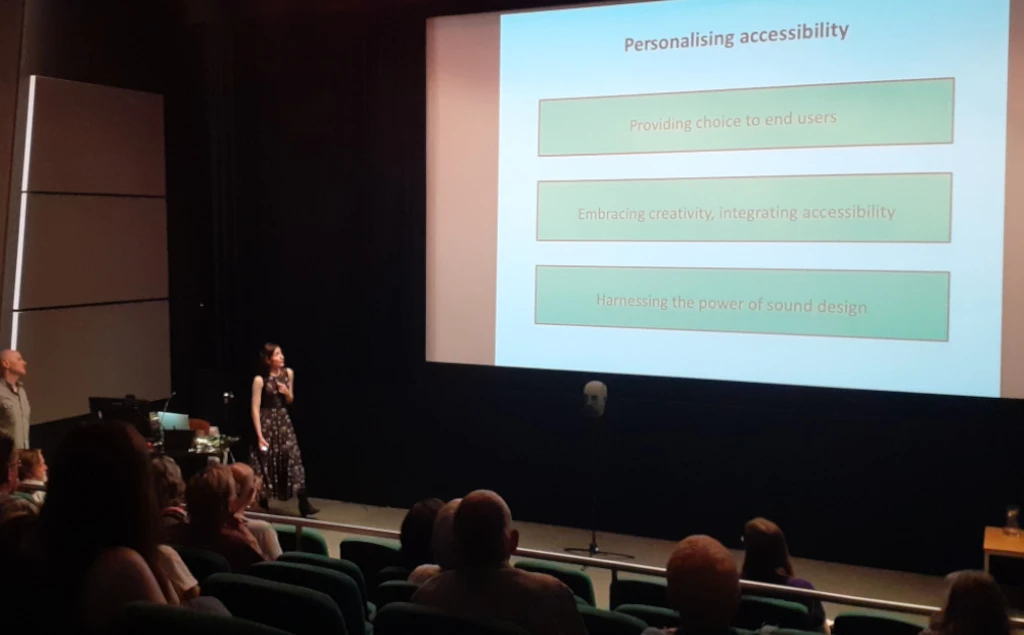I got the chance to help Mariana and Gavin with their Festival of Ideas talk. The Festival of Ideas is an outreach programme that seeks to showcase work carried out at the university through public events. Mariana and Gavin talked about the different challenges in accessibility and broadcasting, the core principles in EAD, and object based audio. It was a great opportunity to meet some of the people who will hopefully be availing from the work we are doing on the EAD project. It also presented an interesting technical challenge!
For the presentation, some excerpts from the film Pearl (Palumbo 2014) were shown. This short film was redesigned to incorporate the EAD methods. This means that it makes use of first person narration, additional sound effects, and spatial audio rendered using binaural audio, in order to provide an accessible experience for visually impaired audiences. Binaural audio is a system that recreates 3D sound using a combination of human ear and head measurements and digital audio. It’s capable of highly accurate spatial audio, but with the caveat that it can only be delivered using headphones. This is fine if you are watching a film using headphones on a phone or laptop, but makes it more challenging if you are hoping to present it to a larger audience.
To solve this problem, we brought in a large multichannel headphone amplifier and nearly 30 wired headphones to distribute to the audience. Gavin and Mariana can attest that coiling and uncoiling so many wires is not the most enjoyable thing in the world. Also, moving that many headphones and the amplifiers was a difficult task in itself. Routing the wire and cables was also a challenge, as we had to ensure that the equipment did not interfere with the overall accessibility of the venue.
In the end, we managed to pull it off, but the process really highlighted how important the current work we are doing for EAD is. At the moment, we are looking at how we can incorporate spatial audio methods that do not require audience members to be wearing headphones. Making the move away from binaural systems to more commonplace ones like those found in theatres and living rooms will hopefully enable more people to gain access to EAD. In the future, we will be carrying out experiments with visually impaired participants to evaluate our approach.
It was great to welcome participants for our first in-person public engagement event for EADII. We received crucial feedback from visually impaired audience members, which is essential to inform the direction of our research. The staff and student volunteers also made a great contribution and I’m looking forward to the next outreach project (hopefully with less coiling and uncoiling of headphones!)

